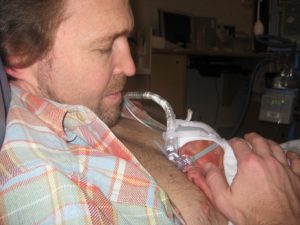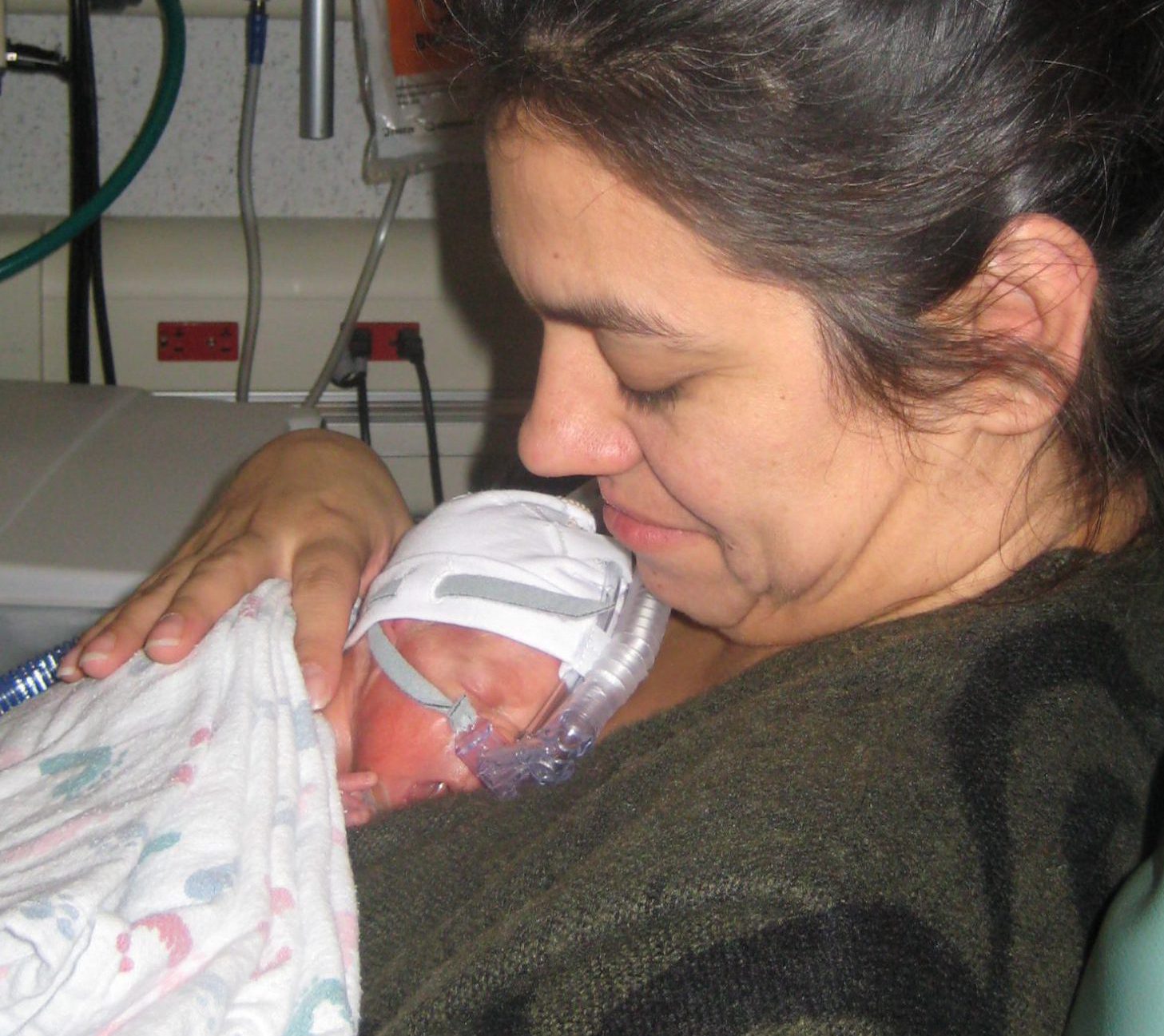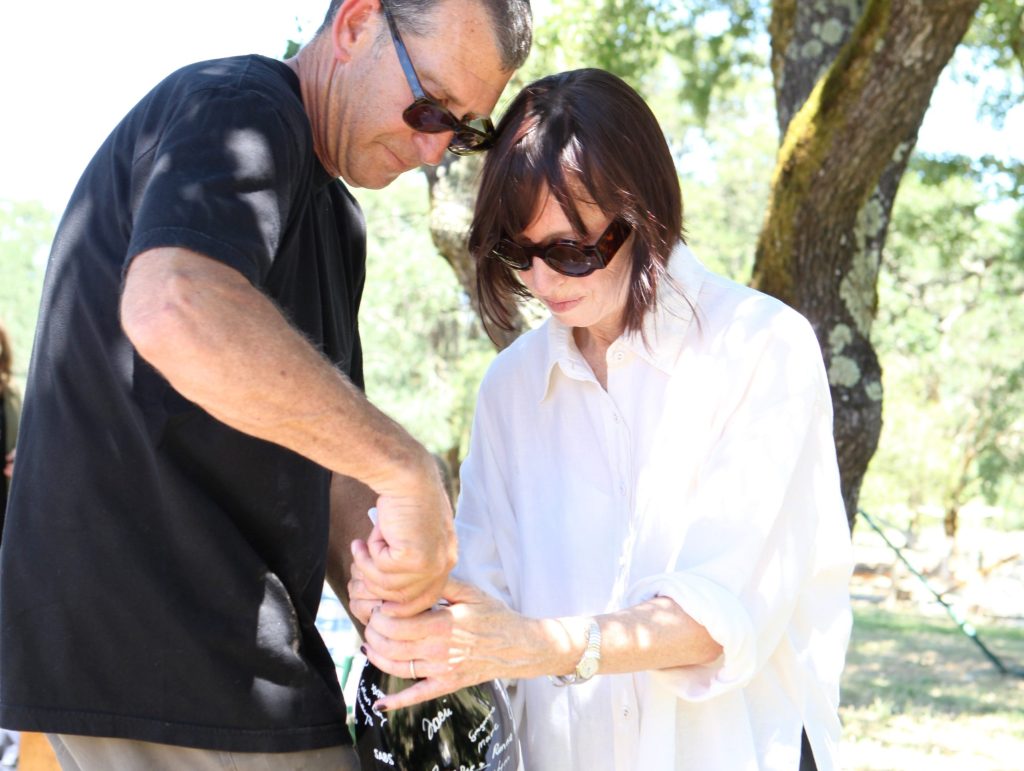Editor’s Note: Janine Kovac became pregnant with what she thought was her second child. Instead, it was twins. And not just any twins. The East Bay resident’s twin boys were high-risk, mono-chorionic/mono-amniotic twins, a rare condition where the babies share a placenta and an amniotic sac with nothing preventing one twin’s umbilical cord from strangling the other twin. The condition occurs in one out of 45,000 twin pregnancies. And, devastatingly, survival is only about 50%. Fortunately, Kovac’s twins, Michael and Wagner, beat the odds and survived birth, but their mom’s high-risk pregnancy was just the beginning of their journey. The boys were micro-preemies, born nearly four months premature, and weighed just over a pound and a half apiece. The babies spent three months in the Level III Newborn Intensive Care Unit (NICU) at Alta Bates Summit Medical Center in Berkeley, where they had IVs, breathing tubes, feeding tubes, X-rays, blood transfusions, and surgery to fix their heart murmurs.
In her reflection below, Janine Kovac shares memories of her family’s time at Sutter’s Alta Bates Summit.
By Janine Kovac
I spent Christmas in the hospital 13 years ago. Four days earlier, when a routine ultrasound showed signs of early labor, I was sent to the Alta Bates Summit Neonatal Unit. I was only five and half months pregnant.
The next ten days are a bit of a blur. There were injections to prevent early labor and daily ultrasounds to monitor my twins’ heartbeats. Mostly I remember the visits from my not-quite-three-year-old daughter. Every night she and my husband would have dinner with me in my room. Afterwards, she’d crawl into my bed and give me a check-up, using a pink hair ribbon as her stethoscope.
“Hello, Miss Janine. I’m Dr. Strawberry,” she’d tell me. “You are going to be ok.”
“Thank you, Dr. Strawberry,” I’d tell her, hoping that she carried some magical preschool wisdom.
“Is tomorrow Christmas?”
“No,” I’d tell her. “But soon.”
My husband bought a Christmas tree from the drugstore which my daughter decorated with her preschool art, affixing her pictures to the plastic branches with paper clips. At night, I’d watch the fiber-optic branches of the tree slowly shift through the colors of the rainbow in a soft, pulsing glow. With my hands on my belly, I sang nonsense lullabies to my babies. As one dashed and darted and kicked me under the ribs, his brother undulated out of the way. Under an eerie light amid antiseptic smells, these moments expanded as if they were a lifetime in themselves. Would I go into labor tomorrow? No. But soon. Too soon.
When the contractions hit on December 30, 2009, I knew it was for real. The twins were born at 25 weeks, four days. Baby A weighed one pound and 12 ounces; his brother weighed even less.
“Can I see them?” my daughter asked.

Matt Kovac holds tiny son Michael in the Alta Bates Summit NICU
“No. Not anytime soon,” I told her. I wasn’t sure what to say. She had a vague memory of the past, but in her world, there was only today and tomorrow. Her concept of the future was just a blurry jumble of aspirations: going to the park, marrying a garbage collector, maybe even eating some ice cream.
I tried to adopt this way of thinking when I stood over my sons in their isolettes. I wanted to concentrate on today and everything that might have gone well: a bath or a diaper change with no bradys.* A positive or negative result, depending on the test. The chance to hold them, even if it was just for 45 minutes. But it was so hard to focus on the present. It seemed as though every body part had its own upward struggle: eyes, ears, lungs, head, heart, gut. For everything that went according to plan, there were a myriad of others that seemed to spiral out of control.
At some point in our stay, a nurse gave me an article that profiled six teenagers, micro preemies all grown up. Ranging in age from 13 to 16, they were now athletes, artists, and honor students. One was even six feet tall. I stared at the group photo that graced the first page. I had been so focused on micro preemies healthy enough to go home, it hadn’t occurred to me that they would grow into healthy teenagers. It seemed as impossible to hope for as my daughter’s desire to one day get more ice cream. But here it was: proof that it happened.

Photo by Terry Lorant. The Kovac family in 2022: Michael and Janine, Chiara AKA “Dr. Strawberry”, Michael and Wagner.
And then it happened to us. Our micro preemies graduated from the NICU after three months of compassionate care and excellent medical attention. By the time they went to kindergarten, you’d never guess that they needed a year of early intervention therapy or that they had been delayed talkers. Now in seventh grade, they are artists, athletes, and honor students.
This holiday season, my family and I have so much to be grateful and thankful for. Thanks to so many people including NICU nurses, doctors, respiratory therapists, social workers and so many others, my twins Michael and Wagner are living healthy lives filled with joy, laughter and promise. I couldn’t ask for anything more and we appreciate our Alta Bates Summit family for everything they did to support our family.
Want more? Read Janine Kovac’s memoir Spinning: Choreography for Coming Home, which chronicles her experience as the mother of twins born nearly four months premature.
* Bradycardia or “Bradys” is an abnormally slow heart rate.





